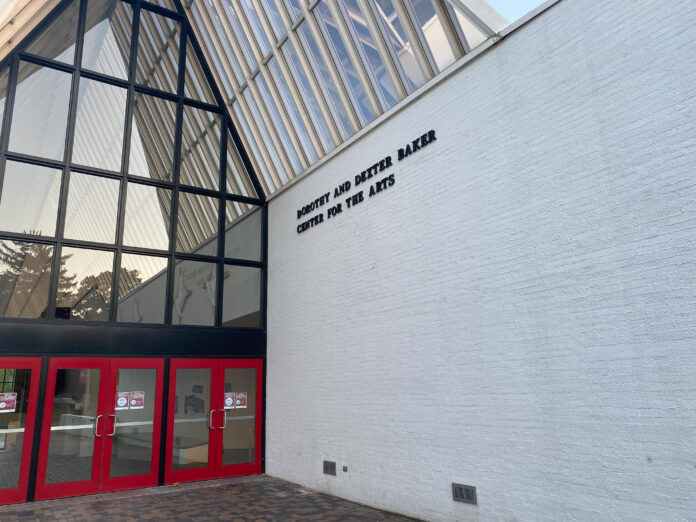In 1971, Muhlenberg’s Board of Trustees approved the initial designs for a new fine arts building, now known as the Baker Center for the Arts. The building’s designer was none other than internationally-known architect Philip Johnson whose work includes The Glass House in Connecticut, Manhattan’s Sony Tower and the David H. Koch Theater at Lincoln Center. However, the architecture world has recently been coming to terms with Johnson’s troubling history with Nazism.
Johnson spent the summer of 1932 in Berlin and was urged by a friend to attend a Hitler Youth rally. Johnson exuberantly described the gathering saying, “You simply could not fail to be caught up in the excitement of it, by the marching songs, by the crescendo and climax of the whole thing, as Hitler came on at last to harangue the crowd.” The architect had similar feelings while engaging with the modernist architectural aesthetic as he did in the presence of Hitler’s fascist regime.
After returning to the United States, Johnson possessed a strong desire to construct a fascist party in America, similar to that of Germany’s National Socialist party. He abruptly changed his career path to focus more on journalism and politics. Johnson put his faith behind alt-right and blatantly anti-Semitic Catholic priest and radio host Father Charles Coughlin to become the face of American fascism. Johnson designed the platform for Couglin’s 1936 Chicago rally to resemble the stage where he first encountered Hitler four years prior.
Once Hitler invaded Poland, Johnson was the only American journalist selected to travel with the German Propaganda Ministry to cover the war for the publication “Social Justice.” Johnson downplayed the horrors of the war, reporting “99 percent of the towns I visited since the war are not only intact but full of Polish peasants and Jewish shopkeepers.”
Johnson began to stray away from these views when other American fascists started facing indictment. He even organized an anti-fascist group on Harvard University’s campus, where he was studying as a graduate student. Despite his efforts, word got out, with journalist William Shirer publicly describing Johnson as “The American Fascist” in his 1941 book, “Berlin Diary.” When confronted about this, Johnson would blame his fascination with Nazis on his sexuality, saying that he was attracted to the large groups of chiseled blond men in uniforms.
The Museum of Modern Art (MoMA) in New York City has found itself reckoning with Johnson’s legacy. Johnson was the founding head of the museum’s architectural department and in 1984 a series of galleries were dedicated to him. In 2021, the Black Reconstruction Collective designed an exhibit in which they temporarily covered the plaque displaying Johnson’s name with a piece of denim fabric that states their manifesto. This occurred after a group of Black architects and artists signed on to a letter addressed to the MoMA which stated that Johnson “used his office at MoMA and his curatorial work as a pretense to collaborate with the German Nazi party… [Johnson] effectively segregated the architectural collection at MoMA.”
Muhlenberg has yet to acknowledge Johnson’s past. Mentions of Johnson on the College’s website describe him as “internationally acclaimed” and “world-renowned.” Johnson was also awarded an honorary degree from Muhlenberg in 1977.
In 1976, The Muhlenberg Weekly reported that students were upset that the Center for the Arts’ red brick exterior was being painted white and subsequently threw eggs at the building. While these students were most likely not aware of Johnson’s beliefs, one can retrospectively find irony in this act of protest. Perhaps the eggs were deserved, but for a different reason than the students intended.
The Baker Center for the Arts will hopefully stand tall for years to come, but should Muhlenberg continue to ignore the past of the designer behind it? Should the College condemn this architect who once said that Nazis were “daylight into the ever-darkening atmosphere of contemporary America”?






















